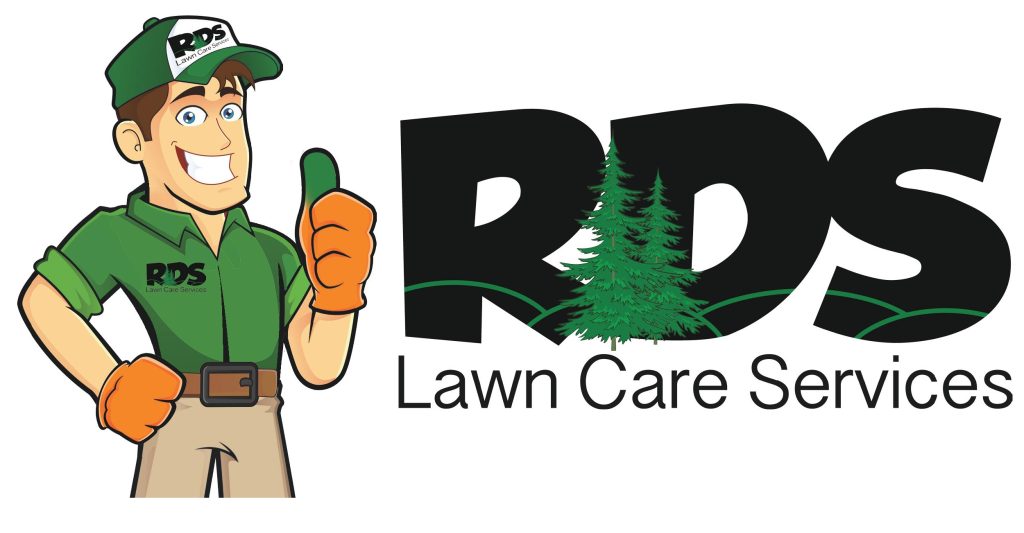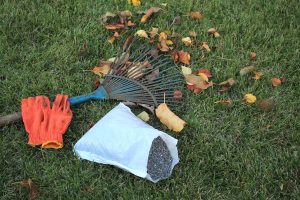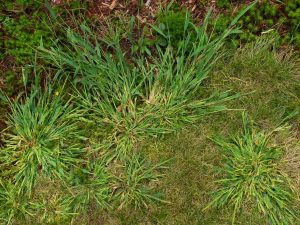
A grub infestation in a lawn is always accompanied by dead, thinning, and damaged grass. These signs of distress are not what attract lawn grubs. In fact, the presence of grubs in your turf likely means that your lawn is very healthy, as grubs tend to thrive in lawns that feature thick grass and strong roots. The signs of damage that come with a grub infestation are caused by the grubs themselves, and we want to make sure you are prepared to prevent and/or eradicate any such infestation.
What Are Lawn Grubs?
Common white grubs are the larval stage of scarab beetles. These are the small, plump, white, and crescent-shaped critters that most people visualize when they think of a grub in the dirt. Though they are not harmful to humans, they can quickly destroy a lawn if their presence is unnoticed or ignored.
White grubs dwell underneath the soil surface and feed on the roots of lawns. The damage they cause to root systems makes it difficult for your lawn to get all the nourishment it needs, which is why grub control is so important. Other pests, such as armyworms and chinch bugs, are not technically “grubs” since they dwell above the surface and feed on the actual grass blades, but identifying and treating the damage they cause to your lawn is just as important.

Lawn Damage Caused By Grubs And Insects
Spongy Turf
This is a telltale sign of a grub infestation, as it differs from certain other ailments that could be confused with environmental or man-made issues. As white grubs chew through your lawn’s roots, the turf becomes less anchored and no longer has a solid foundation. This causes infected patches to feel “spongy” when you step across them or press down on them with your hand.
Yellow Patches
The root damage caused by white grubs can cause your turf to become nutrient deficient, which will cause areas of your lawn to turn yellow as the grass struggles to absorb any form of nutrition. Armyworms are also notorious for leaving behind these yellow patches, which are often mistaken for, and look similar to, the effects of drought stress.

Detached Roots
Spongy or yellowing patches of grass caused by lawn grubs will look similar to environmental or other damage, but the state of a lawn’s roots will help you identify a grub problem. Unlike issues such as drought stress or fertilizer burn, damage caused by grubs can be identified by roots that are detached and/or destroyed by the feeding habits of grubs.
Damage From Larger Animals
If you have noticed larger critters visiting your yard more frequently than they used to, a lawn grub infestation could be the reason. Birds, skunks, moles, and other types of animals love to feed on lawn grubs, and they may be hanging out on your lawn because there is an abundance of grubs for them to eat. This leads to additional lawn damage caused by these larger animals digging and searching for the grubs.
How To Detect Grubs
- Turf that is affected by grub damage will peel back as a result of damaged roots. If you grab a handful of grass and pull back, the turf will come up in a peeling or rolling effect, almost as if you were rolling up a carpet. Depending on the severity of the infestation, you will see some grubs underneath the turf layer that has been peeled.
- Damage from armyworms and chinch bugs can be seen directly on the individual blades of grass. If you see a yellow patch beginning to form and you are unsure whether it is drought stress or grub damage, look closely at the grass. These insects pierce through the blades of grass to suck out the nutrients, leaving behind holes in the middle of the blades and all around the plant. When this type of damage is identified, you will likely see populations of these types of insects.
- Applying a mixture of soap and water is the oldest trick in the book for finding lawn grubs, but it must be applied properly. If you suspect you have a grub infestation, pour a mixture of dish soap and water over the area in question, and let it set in for a few hours at night. This solution will penetrate the soft bodies of lawn grubs, as well as the exoskeletons of adult beetles, which kills them and causes them to rise to the surface. While this is an effective method of identifying lawn grubs, this method is not recommended to exterminate grubs all over your yard because the soapy mixture can cause your lawn to dry out and die.
- If other animals (besides lawn insects) are frequently in your yard, examine the areas where they are frequenting. Many animals will feed on grubs, so any areas where larger animals are persistently digging or pecking will likely be the source of a grub population. In addition, a high concentration of moths anywhere across your lawn could also be an indicator of grubs and insects. Some grubs and lawn insects become moths in the adult stage of their lives. Moths will often hover over the area from which they came, and they will look for suitable areas to lay eggs.
Removing Grubs
Once a grub infestation has been confirmed, plans for removing the grubs and treating the damage must be implemented. The experts at RDS Lawn Care Services have developed strategies for removing grubs safely and effectively. We will send one of our technicians out to your property to examine the affected areas and the rest of your lawn. If grubs are detected, insecticide treatments will begin immediately.
Curative Insecticide Treatments
When grubs already exist in your lawn and the signs of their damage are evident, a curative grub killer will be applied to the infected turf. This treatment is designed specifically to target grubs that have already hatched and are destroying your lawn. Grubs may reappear after a curative treatment has been applied, and additional applications may be necessary if the problem persists. Curative treatments will only be effective against grubs that have already hatched.
Preventive Insecticide Treatments
There is only so much that curative treatments alone can accomplish. For the best results possible, it is important to also utilize a grub preventer during treatments. Preventive treatments target unhatched eggs in order to stop any future grub population from developing. This type of treatment should be applied between spring and late summer; this is typically when eggs hatch, and grubs do the most damage to your lawn alongside adult beetles and other insects in fall.
Natural Treatments
While they may not always be as effective as insecticide treatments, natural remedies can have some success in the fight against lawn insects. Milky Spore is a natural product that is designed to eradicate only “true” white grubs, but it will not be effective against other lawn insects. Beneficial nematodes are microscopic insects that travel through water particles and hunt for grubs. Both of these treatments introduce tiny organisms into your lawn that are safe and will not cause any further damage.
Repairing Grub Damage
Once a grub problem has been properly dealt with, the damage the grubs caused will have to be repaired. There are a number of regular lawn care procedures that can greatly benefit the health of your lawn after, and even before, lawn grubs have ravaged your yard.
Aerate
Certain beetles prefer compacted soil when they are laying their eggs. Aerating your lawn will loosen and decompress the soil, making it less desirable. After a grub population is removed, aerating will also help your lawn breathe and absorb more nutrition for a speedier recovery.
Fertilize
Fertilizing your lawn regularly is the best way to ensure your turf has strong roots that can withstand a grub infestation. Stronger roots result in nutrition being easily distributed to your lawn, which will reduce the effects of grub damage by providing more water and nutrients to the grass in the midst of an infestation.
Seed
Overseeding can be performed on specific patches that have turned yellow or brown. If your lawn struggles to regrow grass, or if the damage is too widespread, new lawn seeding may be required. Seeding a new lawn from scratch is a drastic but effective measure you can take if your lawn is severely damaged from grubs.
Water
Your lawn will need to stay hydrated as it recovers from grub damage. Watering your lawn enhances the effects of fertilizers and seeds, and it is a necessary step to take if you want to restore the health and appearance of your lawn.




